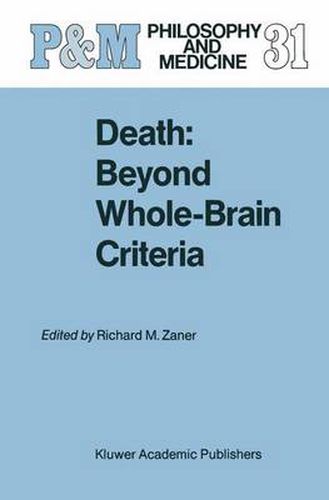Readings Newsletter
Become a Readings Member to make your shopping experience even easier.
Sign in or sign up for free!
You’re not far away from qualifying for FREE standard shipping within Australia
You’ve qualified for FREE standard shipping within Australia
The cart is loading…






This title is printed to order. This book may have been self-published. If so, we cannot guarantee the quality of the content. In the main most books will have gone through the editing process however some may not. We therefore suggest that you be aware of this before ordering this book. If in doubt check either the author or publisher’s details as we are unable to accept any returns unless they are faulty. Please contact us if you have any questions.
From the tone of the report by the President’s Commission for the Study of Ethical Problems in Medicine and Biomedical and Behavioral Re search, one might conclude that the whole-brain-oriented definition of death is now firmly established as an enduring element of public policy. In that report, Defining Death: Medical, Legal and Ethical Issues in the Determination of Death, the President’s Commission forwarded a uni form determination of death act, which laid heavy accent on the signifi cance of the brain stem in determining whether an individual is alive or dead: An individual who has sustained either (1) irreversible cessation of circulatory and respiratory functions, or (2) irreversible cessation of all functions of the entire brain, including the brain stem, is dead. A determination of death must be made in accordance with accepted medical standards ([1], p. 2). The plausibility of these criteria is undermined as soon as one confronts the question of the level of treatment that ought to be provided to human bodies that have permanently lost consciousness but whose brain stems are still functioning.
$9.00 standard shipping within Australia
FREE standard shipping within Australia for orders over $100.00
Express & International shipping calculated at checkout
This title is printed to order. This book may have been self-published. If so, we cannot guarantee the quality of the content. In the main most books will have gone through the editing process however some may not. We therefore suggest that you be aware of this before ordering this book. If in doubt check either the author or publisher’s details as we are unable to accept any returns unless they are faulty. Please contact us if you have any questions.
From the tone of the report by the President’s Commission for the Study of Ethical Problems in Medicine and Biomedical and Behavioral Re search, one might conclude that the whole-brain-oriented definition of death is now firmly established as an enduring element of public policy. In that report, Defining Death: Medical, Legal and Ethical Issues in the Determination of Death, the President’s Commission forwarded a uni form determination of death act, which laid heavy accent on the signifi cance of the brain stem in determining whether an individual is alive or dead: An individual who has sustained either (1) irreversible cessation of circulatory and respiratory functions, or (2) irreversible cessation of all functions of the entire brain, including the brain stem, is dead. A determination of death must be made in accordance with accepted medical standards ([1], p. 2). The plausibility of these criteria is undermined as soon as one confronts the question of the level of treatment that ought to be provided to human bodies that have permanently lost consciousness but whose brain stems are still functioning.